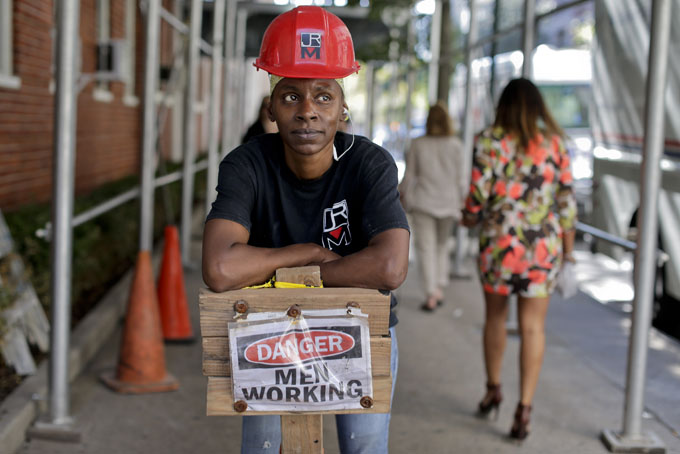
If young women considering a construction career are in search of a role model, Holley Thomas might fit the bill.
She took up welding at a community college in Alabama, landed a job in 2009 with construction giant KBR Inc., and in 2010 became the first woman to take first place in welding at the Associated Builders and Contractors’ National Craft Championships — a competition dating back to 1987.
Thomas, now 29, has worked her way up to foreman and is supervising a 10-worker welding crew at a KBR project in West Palm Beach, Florida. She speaks occasionally to high school girls, who are impressed by her paycheck that averages more than $2,000 a week and what she calls “my toys” — a Harley-Davidson, a Mustang and a Jeep Wrangler.
Thomas knows that harassment exists within the construction industry, but says she’s experienced none of it at KBR. She’s impressed by the efforts of some companies to recruit more women and minorities, though the pace of change is slower than she’d like.
“The biggest issue is getting through to the parents of the kids, the counselors at the schools and making clear that construction is a viable career,” she said.
From an older generation, Mary Battle also has succeeded with a construction career, although she says it required unwavering tough-mindedness.
Now 50, Battle has been working in cement masonry for 30 years and in 2012 became the first woman elected as business manager of Plasterers and Cement Masons Local 891 in Washington, D.C. Under her leadership, the number of women in the local has risen from five to 12, but she doesn’t believe that most construction unions nationwide are committed to boosting the ranks of women.
“Men don’t perceive of women as someone coming to work, they perceive of women as a sex object,” Battle said. “I set rules from the beginning: ‘Don’t touch me.’ You have to be prepared to set a man in his place.”
For younger women considering a construction career, Battle tells them: “The job is not physically hard, it’s mentally hard.”
“No matter how much negativity you get, keep on the job and don’t quit — that’s my motto,” she said.
Battle, a mother of six, credits a devoted baby-sitter with helping her cope with the long hours she sometimes faced as a mason. Many construction jobs start in early morning, and it can be crucial for mothers in the workforce — especially single moms — to arrange for early-morning child care. Mothers can also find it difficult to accept temporary jobs requiring lengthy travel from their homes.
Another challenge, for women who complete apprenticeships, is to get assigned their fair share of working hours. It’s a problem severe enough drive some women out of the field, according to Elly Spicer, who worked for 11 years as a carpenter and now is director of training at a technical college affiliated with New York City carpenters unions.
“You’ll find, unquestionably, that women get access to less hours than men, even though they get same wages and benefits,” said Spicer 57. “You can’t do this working six months of the year.”
Spicer said she was mostly treated with respect during her carpentry career in the 1980s and ’90s, but she knew of other women who quit because of constant pressure to prove themselves.
“Every crew was different,” she said. “You could have an enlightened foreman, while another might be patronizing. You still find that variation today — good old sexism still rears its ugly head sometimes.”